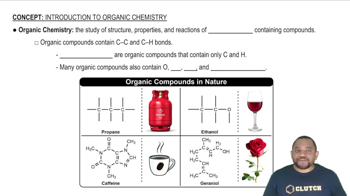Here are the essential concepts you must grasp in order to answer the question correctly.
Functional Groups
Functional groups are specific groups of atoms within molecules that are responsible for the characteristic chemical reactions of those molecules. In organic chemistry, aldehydes and ketones are defined by the presence of a carbonyl group (C=O). Aldehydes have the carbonyl group at the end of the carbon chain, while ketones have it within the chain.
Recommended video:
Carbonyl Functional Groups
Nomenclature of Organic Compounds
The nomenclature of organic compounds follows specific rules set by the International Union of Pure and Applied Chemistry (IUPAC). For aldehydes, the suffix '-al' is used, while for ketones, the suffix '-one' is applied. The longest carbon chain containing the functional group is identified, and the position of the carbonyl group is indicated by a number.
Recommended video:
Introduction to Organic Chemistry
Structural Representation
Structural representation in organic chemistry illustrates how atoms are arranged in a molecule. The image provided shows a ketone, where the carbonyl group is flanked by carbon chains. Understanding structural formulas is crucial for identifying the type of compound and its functional groups, which aids in proper naming and predicting chemical behavior.
Recommended video:


 Verified step by step guidance
Verified step by step guidance


